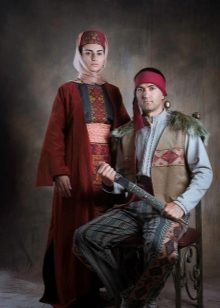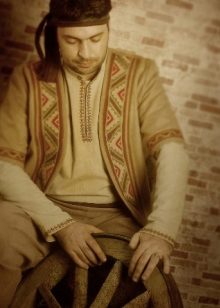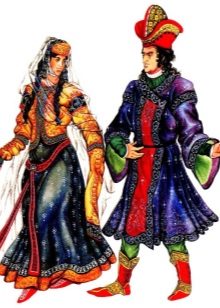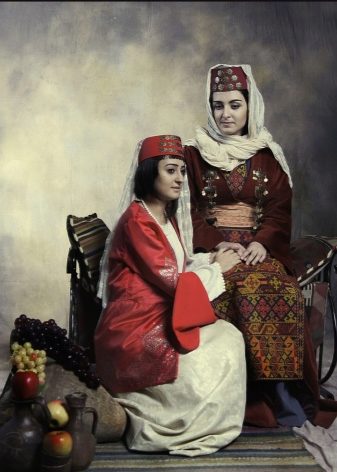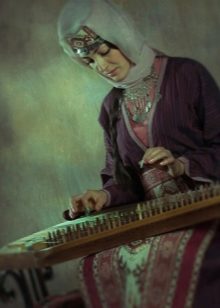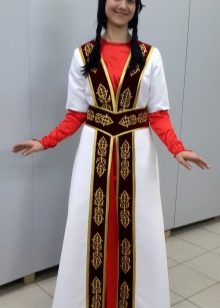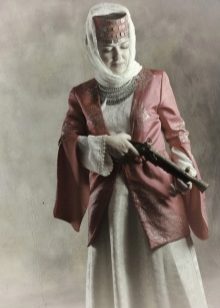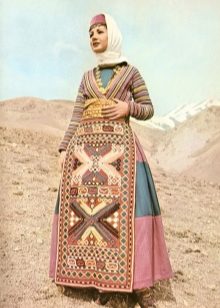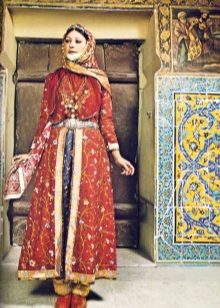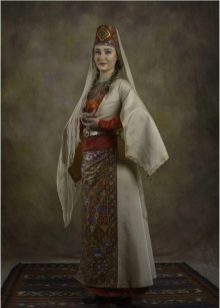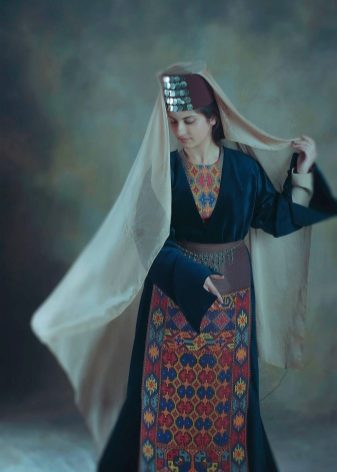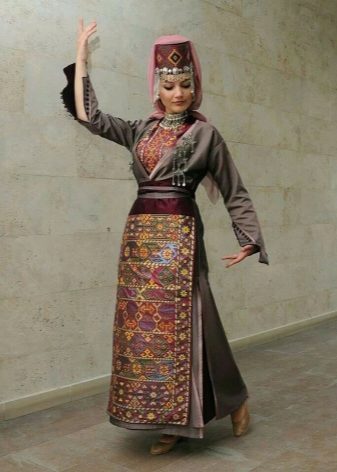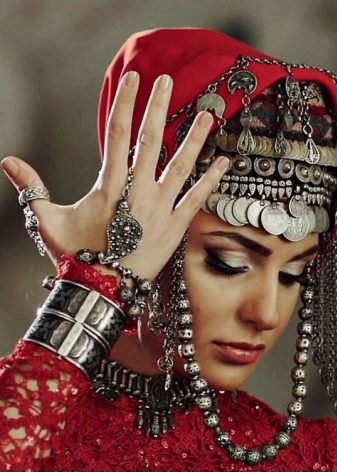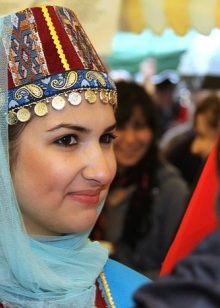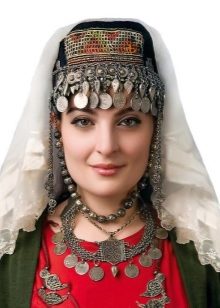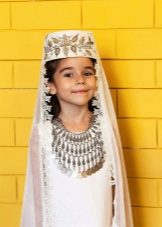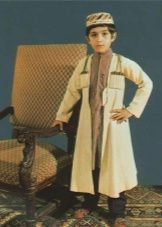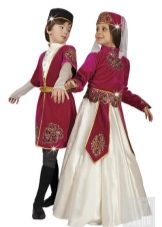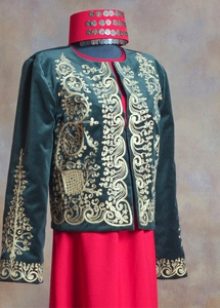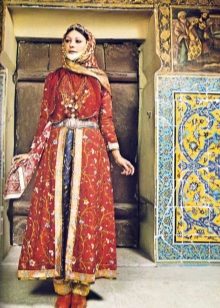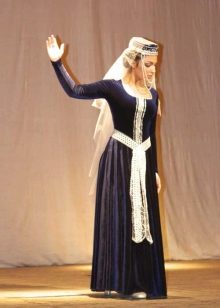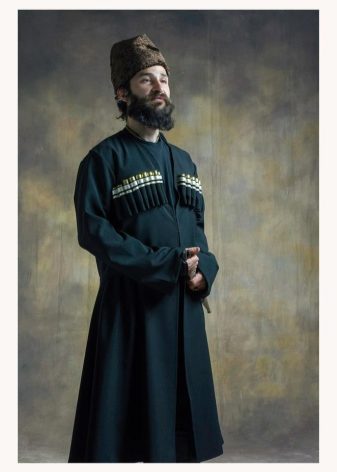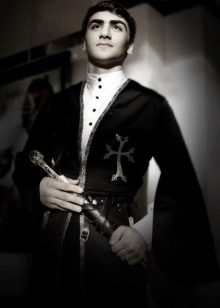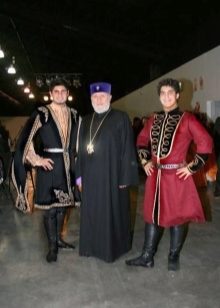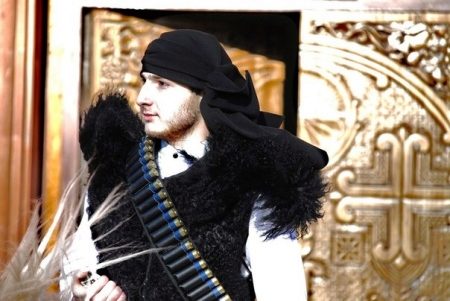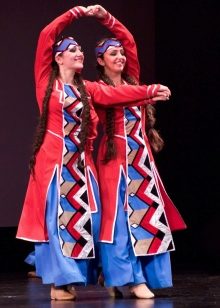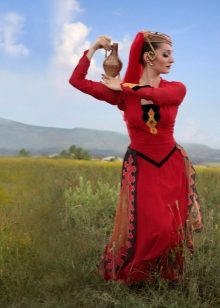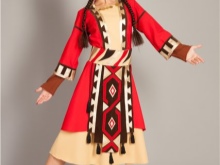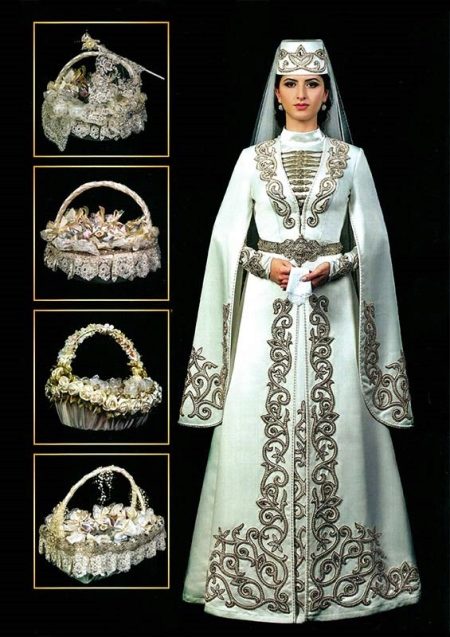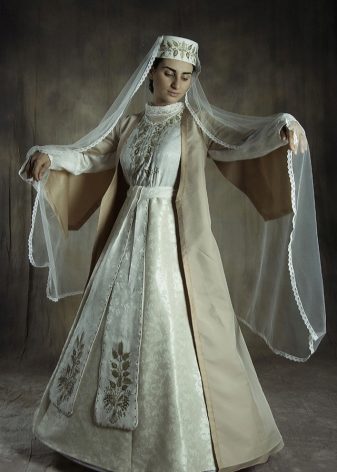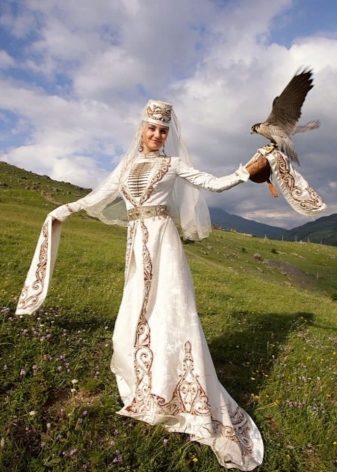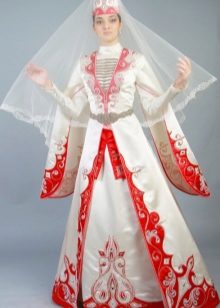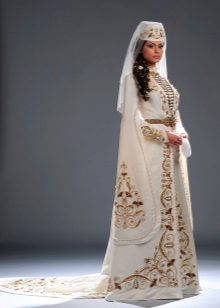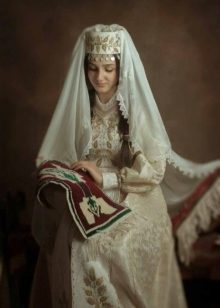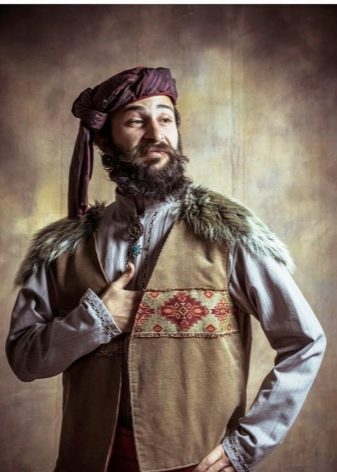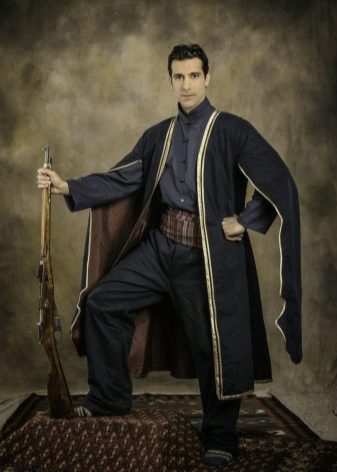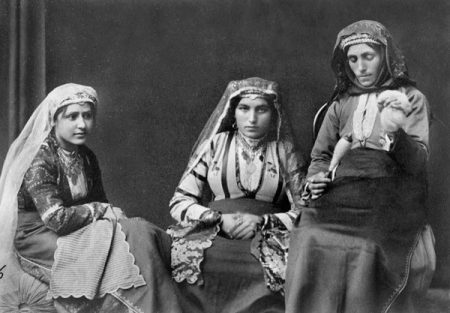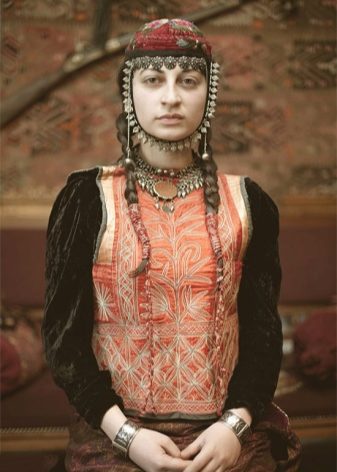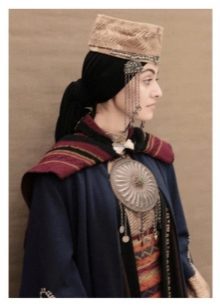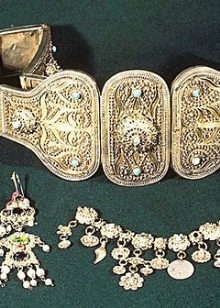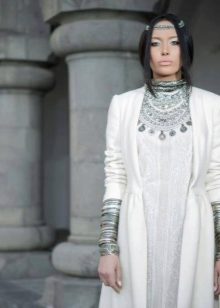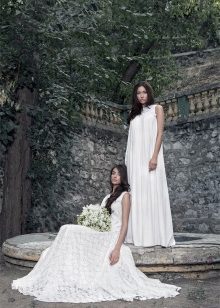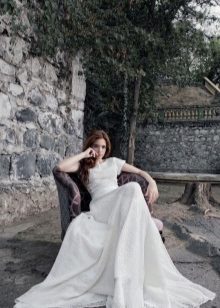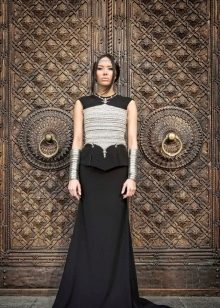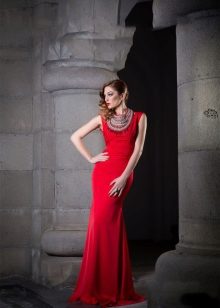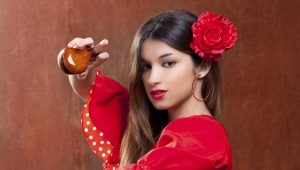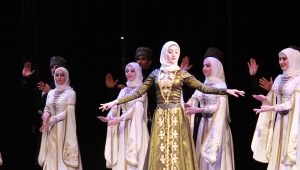Armenian national costume
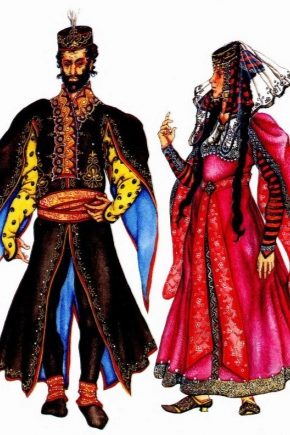
Armenian national costume
The national costume is a kind of chronicle, which through the centuries tells us about the way of life of the people, its history and soul. According to the fabrics, cut and clothing, one can judge about the climatic and geographical conditions, the social, religious structure and economic development of the people. You can even understand what challenges he faced. For example, weapons have always been an integral part of the Armenian national costume. And the reason for this was a hectic life in the Caucasus.
A bit of history
The Armenian people are very ancient. Its history begins in the first millennium BC. In general, he is three thousand years old. Historians give the same amount to the national costume. Tracing its development is not difficult. Sources preserved enough. Here and archaeological materials, and descriptions in ancient books, and engravings, and even ancient sculptures, bas-reliefs of temples.
The costume changed not only depending on the time and epoch, but also under the influence of the environment where this or that Armenian community lived. It is known that in the 8th century the territory of Armenia was seized by the Arabs. After a number of unsuccessful uprisings, Orthodox Armenians began to seek salvation in the neighboring states: Georgia, Byzantium, and later in more distant European countries. Nowadays, only 3 million people live in Armenia, while the total number of Armenians in the world is 10-12 million. Therefore, the costumes of Armenians living in the Middle Ages in Italy differed significantly from the outfits of their fellow tribesmen who took refuge. let's say in Georgia. But the similarities can still be determined.
Varieties
Female
The complete set of casual clothes of the Armenian woman included a halav shirt, pokhan pants, an arkhaluh top dress and an apog of an odor. On holidays, one more “mintan” dress was added to this set.
The halav shirt was long. On the side, wedges that had a slanting cut were sewn. The sleeves of halav were straight, and the neck was round. The incision was made on the chest. Under the shirt they wore trousers. They, as a rule, were red and sewn of cotton. Pants adorned the ankles with embroidery.
Over the shirt and pants they put on the dress "arkhaluh". It had cuts on the sides. Mintana - a festive top dress - was cut in the same way as arkhaluh. But the mintana had no cuts. They girdled a pollock with a long scarf, which was made of silk. The sleeves were fastened separately on small buttons in the form of balls or fastened to a cord. The edges of the sleeves were trimmed with braid.
An important part of women's Armenian costume was an apron. He was called "gognots" and embroidered with braid. From above it fastened on a narrow belt.
The headdress played a special role. He carried information about the social status of women. The girls braided many braids, into which they wove woolen threads of the same color as their hair. Thus they were lengthened and visually thickened. A small felt hat was put on the head. To her were attached on special chains ornaments in the form of leaves, rings, lunnits and more. When a woman got married, her headgear changed. Now felt hat decorated with precious stones and pearls. If the family was poorer, then small flowers sewn from silk fabrics. When the woman went outside, she put a large cover over the headdress, which was trimmed with a border. If the woman was young, the embroidery was white, and if the elderly was blue.
Child
Small children who were not even a year old were dressed in a simple shirt. After a year, arkhaluk was added to the shirt. Often it was made too long, which prevented the child from crawling and walking freely. This was done to make it easier to keep track of the child.
Up to seven years, boys and girls were brought up together, and after they were separated. In general, children's costume did not have significant differences from an adult. His first adult arhaluh boy wore at 10-12 years.
Children's clothing, as well as adults, was embroidered. Embroidery for her was of particular importance. Often used crosses and similar elements. They were supposed to protect the child from evil spirits, sorcerers, and all unclean things.
Together with the dowry, parents had to give their daughters a few costumes, which were called "Taraz".
Male
The suit of the Armenian man included a shirt, pants, trousers and a caftan. Silk or calico fabrics were used for sewing the shirt. Also, the shirt had a low standing collar, which was fastened on the side. The trousers were made of cotton or wool and girdled with a wide belt. A wallet and a dagger were attached to it.
Eastern Armenians, like women, put “aralukh” on top of everything. Only he was shorter than the female, and reached the knees. Western Armenians did not wear araluh. Instead, he wore a vest - "elak". They wore a short jacket over the top of the elk. Her sleeves were single cut. Such a jacket had no fasteners and was called “bachkon”. All clothes had very beautiful embroidery.
In winter, Armenian men wore sheepskin coats. If, however, they lived in an area where there was no harsh winter, instead of fur coats, they put on sleeveless jackets made of goat fur.
Features
Colors and patterns
Often, the choice of color for Armenian clothes depended on the area where they lived. Somewhere preferred red color, somewhere white. Also used are blue, purple and green.
Red color was preferred not only in clothes, but also widely used as a color for embroidery. Red in combination with green was the symbol of the wedding. Black color was considered mourning and symbolized old age. Yellow was used extremely rarely. He, like black, had a negative value and most often it was associated with wilting and disease.
Fabrics
The choice of fabrics, as well as colors, was huge and depended on the locality. Cotton cloths and silk were used for underwear, cloth, wool, satin and even brocade for the upper cloth.
Cut
Male arkhaluh was cut out with a cut-off back. At the waist she was going to the assembly. Sometimes the back is cut from several wedges. Sew the upper part and lining with one seam.
The lower men's pants (“vartik”) were made with a wide insertable strip. Often this band was wide enough, and therefore the length of the pants was equal to its width.
The female arkhaluh also had a cutting back and a beautiful long neckline on the chest. From the side, cuts were made that went from the hem to the waist. Because of this, there were three floors: two in front and one behind.
An interesting ritual associated with the tailoring of clothes, exists during the Armenian wedding. A few days before the celebration, relatives of the groom came to the bride's house to help carve out and sew a dress. The wife of the planted father was to cut and cut the material. In the process, she threw scissors, cursing due to the fact that they are not sharpened, and said that she would not help more. However, according to popular belief, if she does not open the dress, the wedding will not take place. Because all the guests began to appease her with money and treats. Then she continued to work.
The beauty of the wedding dress
Wedding clothes in traditional society differed only in that arkhalukhs sewed from more expensive fabrics. Another was the color of wedding clothes. For example, socks must be made in red, which was considered protective. An important element of the wedding dress were silver belts. Their newlyweds were presented by the bride's parents during the wedding. Previously, part of the wedding dress was an apron from expensive fabrics, which were embroidered with gold threads. The wedding dress was decorated with embroidery.
Often, embroidery on wedding dresses was done in red-green. In this case, green symbolized spring, youth, a new generation.
Over time, European traditions more and more penetrated into the Armenian wedding dress. Women's dress began to make fitted, white. Only the silver belt remained unchanged.
Accessories and decorations
Armenian hats are very diverse. Men's hats made of fur, cloth, felt. Western Armenians preferred hemispherical wool caps.
Women's hats were also different and more complex. More often women wore a small hat like a fez, to which many ornaments were hung. Married women covered such a hat with handkerchiefs that were supposed to cover the neck. The lower part of the face was also covered with a white handkerchief. Over it put on one more color. More often he was red or green. In the presence of a man, a woman always had to hide her hair, so she could take off her headdress only if none of them was at home.
Western Armenians used different headbands. They were made of wood and sheathed with velvet and pearls. More rims made of papier-mache, which is also sheathed velvet.
Special attention was paid to jewelry. First of all, these were family jewels that were handed down from generation to generation. Armenian women wore necklaces and bracelets (both on arms and legs). Sometimes special silver jewelry with turquoise elements was inserted into the nose. Buttons on clothes were also often silver.
Footwear
The Armenians used the so-called three as shoes. They were made from rough skin. Shod three on special wool socks "gulp". Women wore slippers with sharp noses and also wore socks.
In bad weather, they wore Mascher leather boots. On top of the mascher shoe special slippers "shmek". Schmek looked like heeled shoes, but without a backdrop.
Stylized models
Today, the Armenian national costume has received its second development. A number of famous Armenian designers brought back not only the traditional Armenian wedding dress, but also many elements of cut, ornaments and ornaments. By the way, they used museum collections for inspiration.
The most famous jewelry was Arpi Avdalyan. The designer Arevik Simonyan, the owner of the brand Kivera Naynomis, skillfully complements her models with traditional necklaces and bracelets. Also, national motives are used for their models by designer Gevorg Shadoyan.
